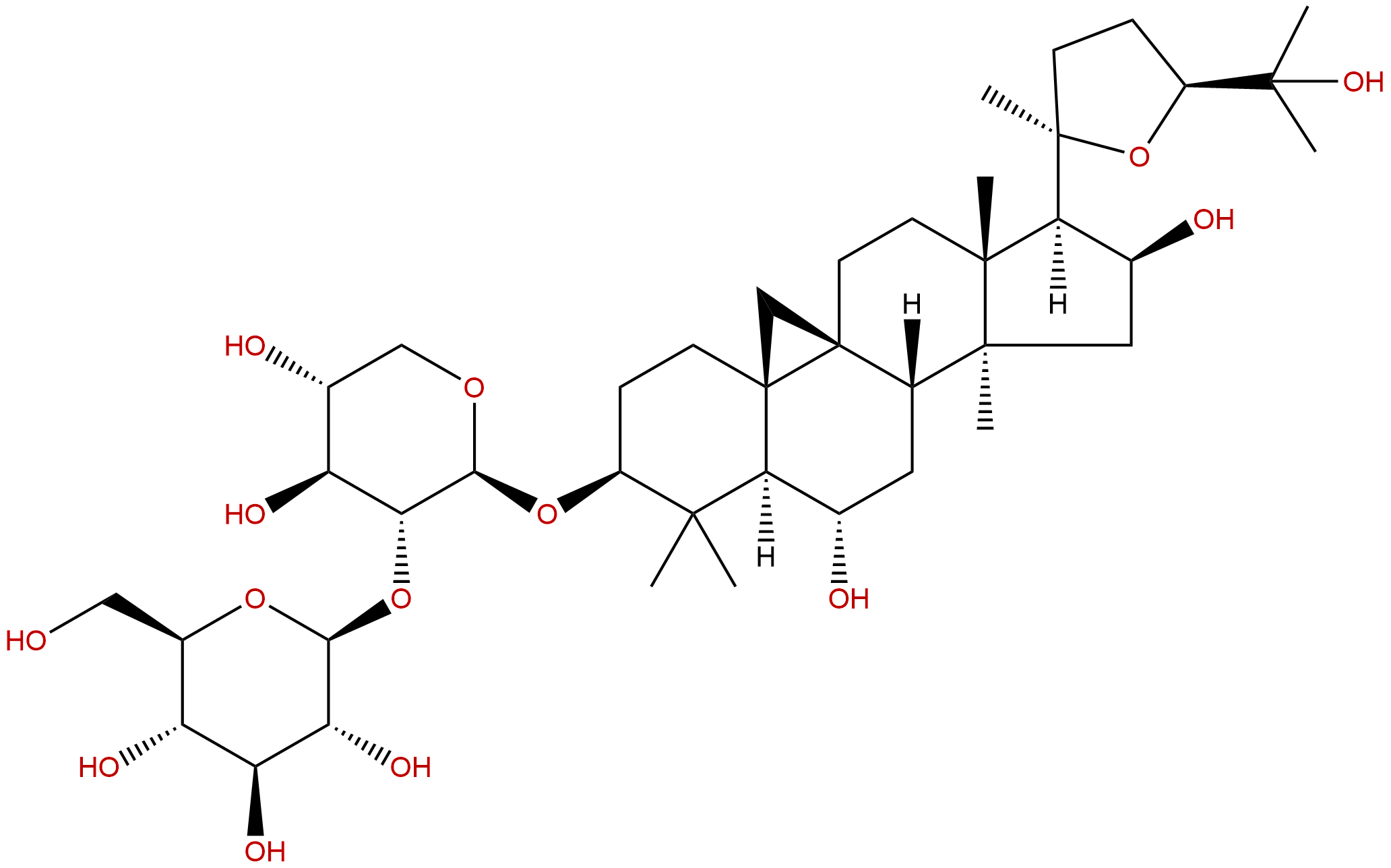Astragaloside III Descrtption
Product name: Astragaloside III
Synonym name:
Catalogue No.: BP0212
Cas No.: 84687-42-3
Formula: C41H68O14
Mol Weight: 784.981
Botanical Source: From Astragalus membranaceus
Physical Description: Powder
Type of Compound: Triterpenoids
Purity: 95%~99%
Analysis Method: HPLC-DAD or/and HPLC-ELSD
Identification Method: Mass, NMR
Packing: Brown vial or HDPE plastic bottle
Storage: Store in a well closed container, protected from air and light. Put into refrigerate or freeze for long term storage.
Whenever possible, you should prepare and use solutions on the same day. However, if you need to make up stock solutions in advance, we recommend that you store the solution as aliquots in tightly sealed vials at -20℃. Generally, these will be useable for up to two weeks.
The product could be supplied from milligrams to grams, up to kilograms
Inquire for bulk scale.
Descriptions:
Astragaloside III can effectively reduce cancer cell survival in vitro and inhibit the tumor growth in vivo, the potential mechanism is the induction of cell apoptosis signaling pathways, suggests that it provides a new therapeutic tool to treat breast cancer.[1]
AstragalosideIII, ononin and astragalosideIV have anti-gastric ulcer effects, also exhibit strong growth-promoting effects in cultured GES-1 cells.[2]
References:
[1] Wang S, Tang L, Chen F. Afr J Tradit Complem, 2015, 12(3):183-6.
[2] Liu X H, Zhao L G, Liang J, et al. J Chromatogr B , 2014, 960(6):43-51.
[3] Wang H, Wang Q. J Chinese Pharm Sci, 2002, 37(4):298-300.


